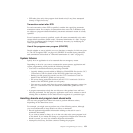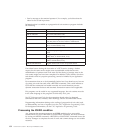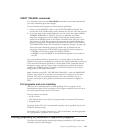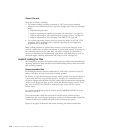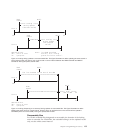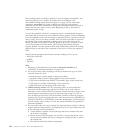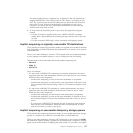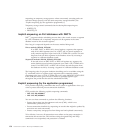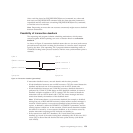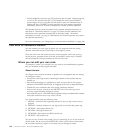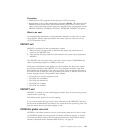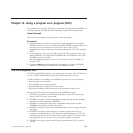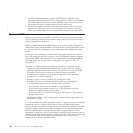
After a task has issued an ENQ RESOURCE(data-area) command, any other task
that issues an ENQ RESOURCE command with the same data-area parameter is
suspended until the task issues a matching DEQ RESOURCE(data-area) command,
or until the unit of work ends.
Note: Enqueueing on more than one resource concurrently might create a deadlock
between transactions.
Possibility of transaction deadlock
The enqueuing and program isolation scheduling mechanisms, which protect
resources against double updating, can cause a situation known as transaction
deadlock.
As shown in Figure 15, transaction deadlock means that two (or more) tasks cannot
proceed because each task is waiting for the release of a resource that is enqueued
upon by the other. (The enqueuing, DL/I program isolation scheduling action, or
VSAM RLS locking action protects resources until the next synchronization point is
reached.)
If transaction deadlock occurs, one task abends and the other proceeds.
v If both deadlocked resources are non-RLS resources, CICS file control detects the
deadlock and abends one of the transactions with an AFCF abend code.
v If both deadlocked resources are VSAM RLS resources, deadlock detection is
performed by VSAM. If VSAM detects an RLS deadlock condition, it returns a
deadlock exception condition to CICS, causing CICS file control to abend the
transaction with an AFCW abend code. CICS also writes messages and trace
entries that identify the members of the deadlock chain.
Note: VSAM cannot detect a cross-resource deadlock (for example, a deadlock
arising from use of RLS and DB2 resources) where another resource manager is
involved. VSAM resolves a cross-resource deadlock when the timeout period
expires, as defined by either the DTIMOUT or FTIMEOUT parameters, and the
waiting request is timed out. In this situation, VSAM cannot determine whether
the timeout is caused by a cross-resource deadlock, or by a timeout caused by
another transaction acquiring an RLS lock and not releasing it.
v If the resources are both DL/I databases, DL/I itself detects the potential
deadlock as a result of the tasks issuing their scheduling calls. In this case, DL/I
causes CICS to abend the task that has the least update activity (with abend
code ADCD).
TASK A TASK B
..
..
Update resource 1 .
. Update resource 2
..
..
Update resource 2 .
. (Wait) Update resource 1
. (Wait) .
..
..
Syncpoint Syncpoint
Figure 15. Transaction deadlock (generalized)
Chapter 13. Programming for recovery 159



